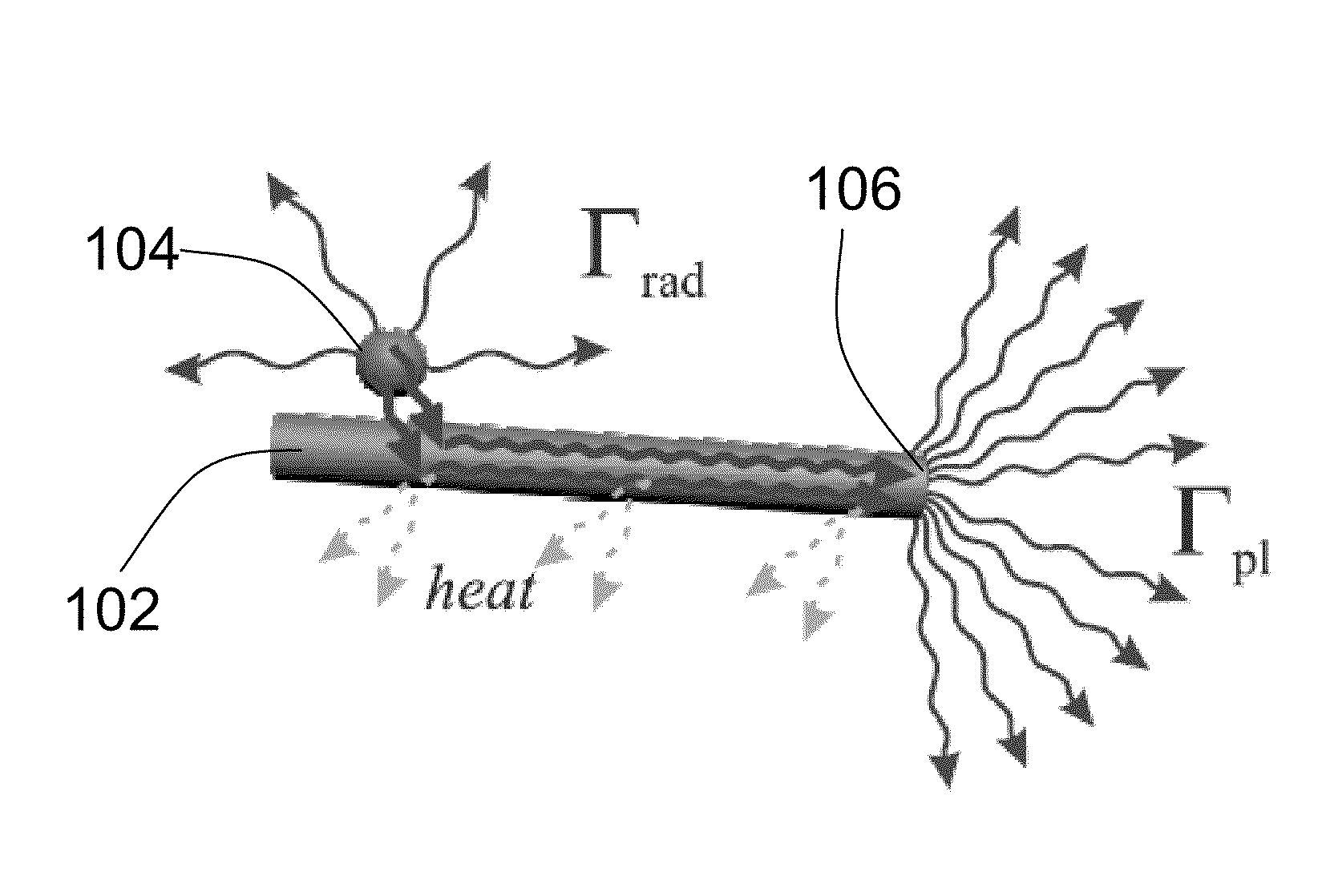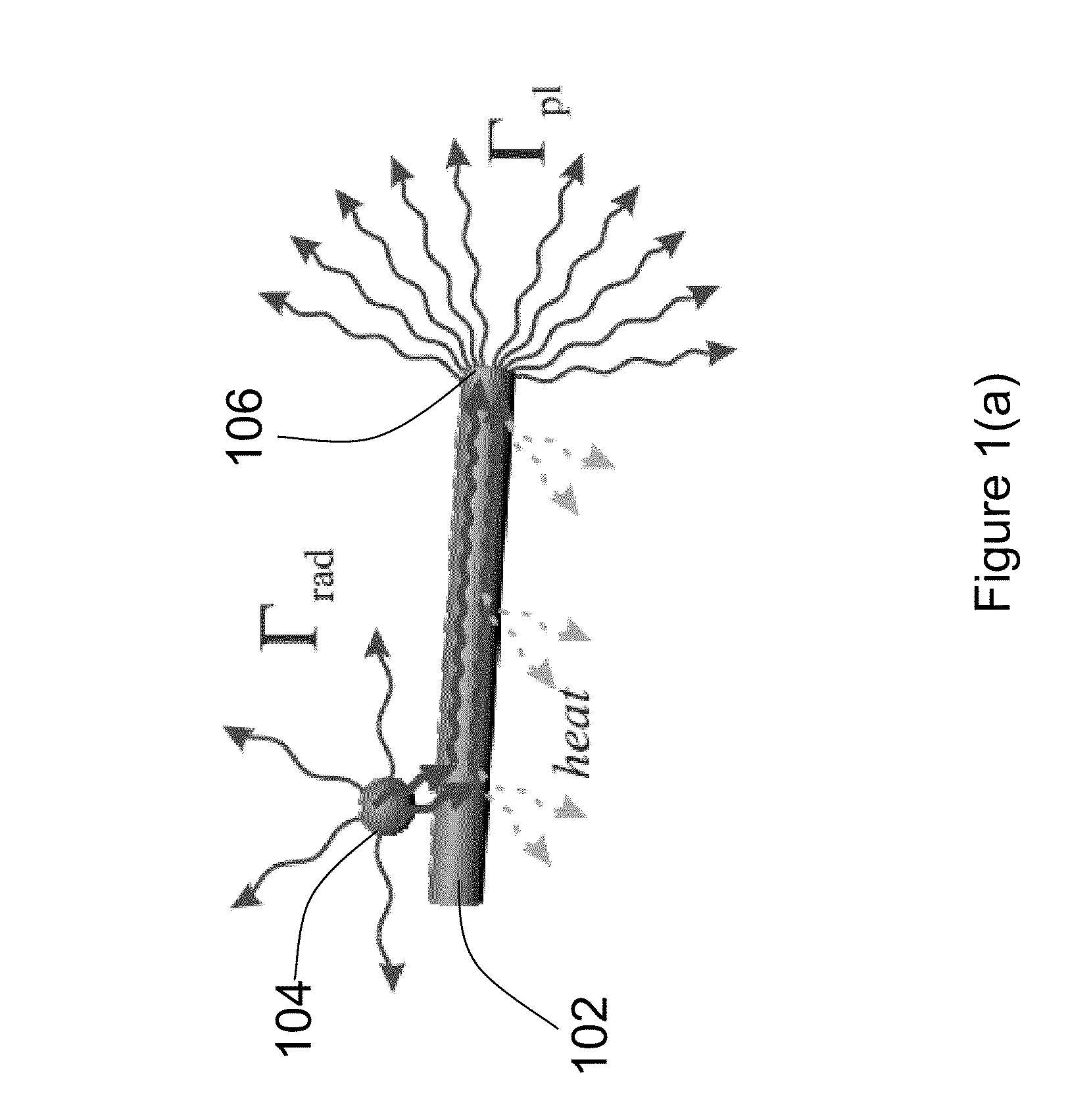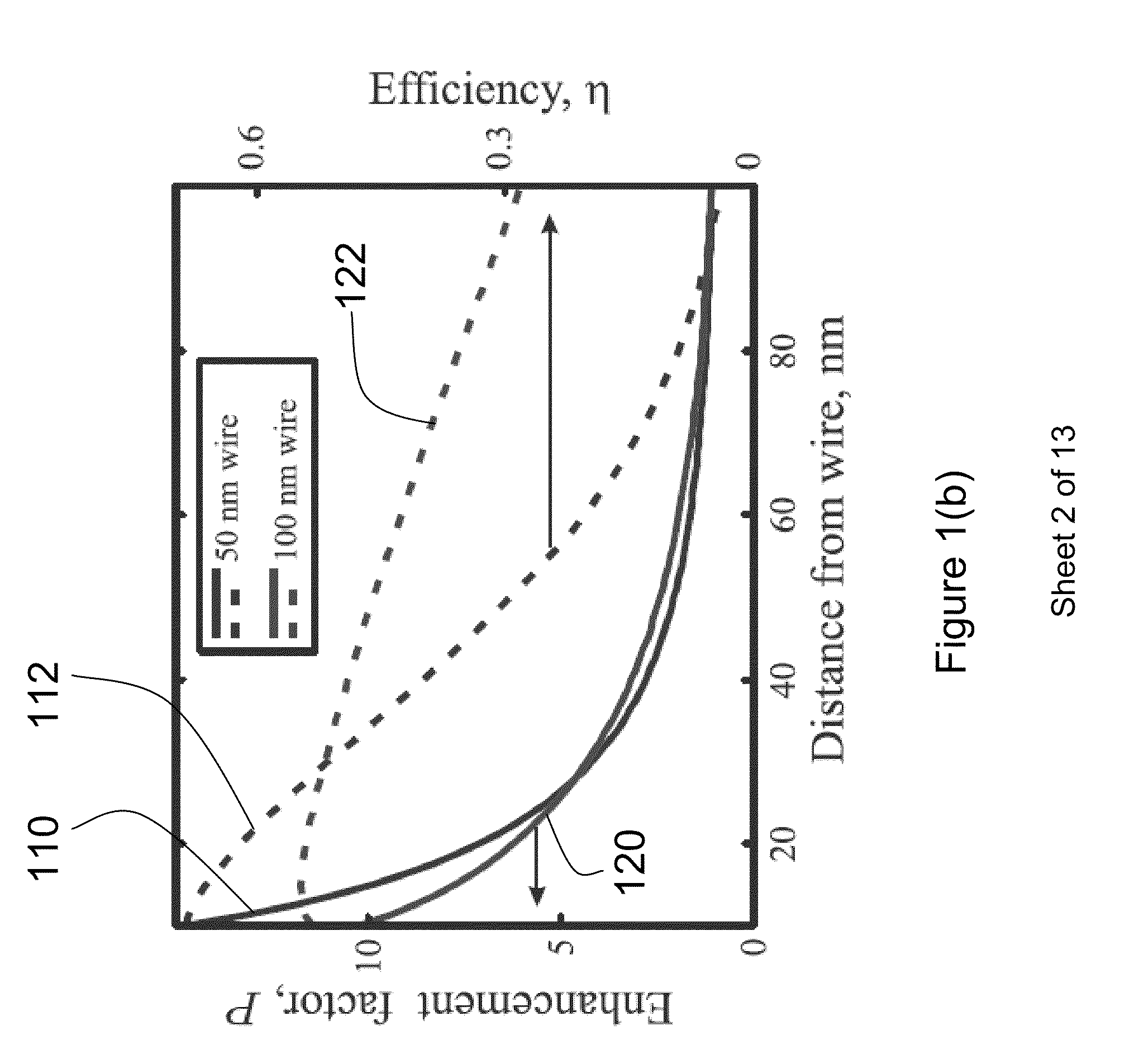Method Of Efficient Coupling Of Light From Single-Photon Emitter To Guided Radiation Localized To Sub-Wavelength Dimensions On Conducting Nanowires
a single-photon emitter and guided radiation technology, applied in the direction of optical radiation measurement, luminescent dosimeters, instruments, etc., can solve the problems of controlling the interaction between single photons and individual optical emitters, and achieve the effects of improving the efficiency of single-photon emitter interaction
- Summary
- Abstract
- Description
- Claims
- Application Information
AI Technical Summary
Benefits of technology
Problems solved by technology
Method used
Image
Examples
Embodiment Construction
[0035]The present disclosure demonstrates a cavity free, broadband approach for engineering photon emitter interactions via sub-wavelength confinement of optical fields near metallic nanostructures. For background, see Chang, D. E., Sørensen, A. S., Hemmer, P. R., Lukin, M. D., “Quantum Optics with Surface Plasmons,”Phys. Rev. Lett. 97, 053002 (2006); Atwater, H. A., “The promise of plasmonics,”Scientific American 296(4), 56 (2007); Genet, C., Ebbesen, T. W., “Light in tiny holes,”Nature 445, 39 (2007). When a single CdSe quantum dot (QD) is optically excited in close proximity to a silver nanowire (NW), emission from the QD couples directly to guided surface plasmons in the NW, causing the wire's ends to light up. Sanders, A. W., Routenberg, D. A., Wiley, B. J., Xia, Y., Dufresne, E. R., Reed, M. A., “Observation of Plasmon Propagation, Redirection, and FanOut in Silver Nanowires,”Nano Lett. 6(8), 1822 (2006); Ditlbacher, H., Hohenau, A., Wagner, D., Kreibig, U., Rogers, M., Hofer ...
PUM
 Login to View More
Login to View More Abstract
Description
Claims
Application Information
 Login to View More
Login to View More - R&D
- Intellectual Property
- Life Sciences
- Materials
- Tech Scout
- Unparalleled Data Quality
- Higher Quality Content
- 60% Fewer Hallucinations
Browse by: Latest US Patents, China's latest patents, Technical Efficacy Thesaurus, Application Domain, Technology Topic, Popular Technical Reports.
© 2025 PatSnap. All rights reserved.Legal|Privacy policy|Modern Slavery Act Transparency Statement|Sitemap|About US| Contact US: help@patsnap.com



